The Utmost Truth: Cybernetics, Cosmic Consciousness, Alan Watts, and Humanity’s First Ecstatic Dance
A New Report from the Mystical Library
Just this past week Brad had five dreams in one night, each a transform of the one before it. This visionary journey led him back to the mystical library to receive a book by Alan Watts, and then to a Boston church to discover that book’s primary teaching. But first, the journey began with a single sheet of paper.
***
I experienced myself as a young undergraduate student again, and was thrilled because I had captured the deepest, highest, utmost truth of life. I wrote it down on a single piece of paper because no lengthy exposition was needed. Though I expressed it in my own way, it seemed this truth had been said before, but I could not recall where or by whom.
Then all of a sudden the paper disappeared as if the wind took it from my hands. I could not remember what had been written. For a moment I wondered if it had been a story I wrote long ago. Called “Timothy the Butterfly,” it depicted the brief life of a butterfly from cocoon to metamorphosis with outstretched flapping wings, delightful flight, pollination, and reincarnation as each stage of life transitioned into the next. I wrote that story when I was 19 years old, just after my first initiatory ecstatic awakening that took place in a chapel.[1]
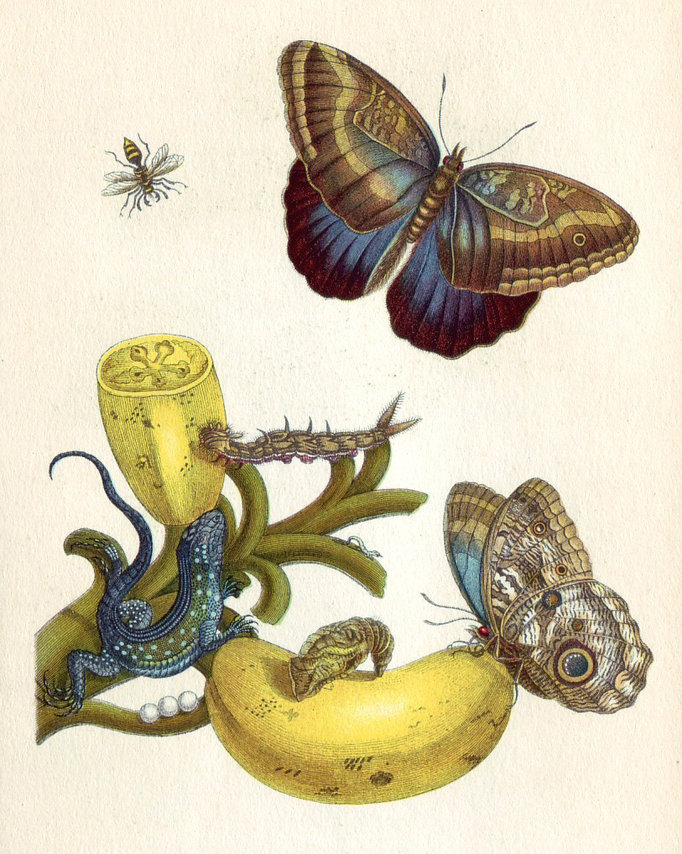
I then wondered if the utmost truth I had written on the piece of paper had addressed the circular wisdom of cybernetics, a topic I studied both prior to and after my night in the chapel. With that thought, I suddenly found myself in the library of the Massachusetts Institute of Technology where as an undergraduate student I used to read the archival letters of Norbert Wiener, the principal founder of cybernetics. It now seemed that what I had written was a single page summary of cybernetics, done so without mention of its name—a tale of embodied cybernetics. It surely had been about moving from one transitional middle to another, enacting the means of keeping the circles of life unbroken.
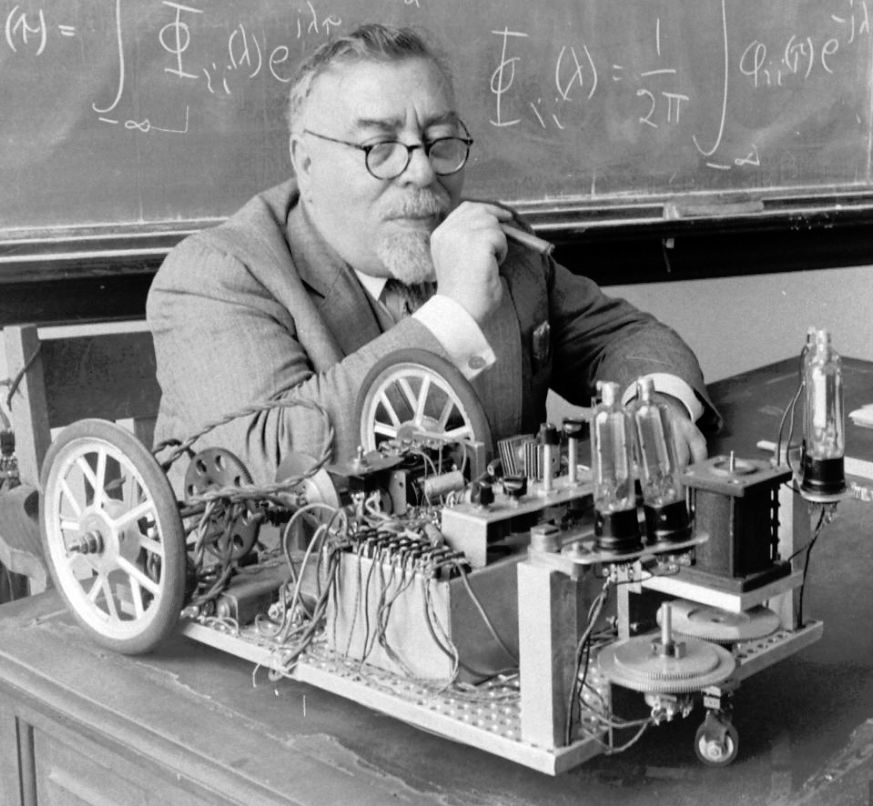
I woke up pondering the dream and asked to go back to the spiritual classroom because I felt the vital importance of the teaching that was in motion on the other side. There was clearly more to learn. After praying myself back to sleep with the three-word prayers of The Pinnacle Prayer Book, I dreamed again. This time I was in Boston and on my way back to the previously visited library. I then realized that I actually had been sent before to the mystical library but only imagined it was at M.I.T. because I was in the stacks pertaining to cybernetics. Yet in the present dream scene I was still Boston and heading across the Charles River to the First Creation version of the M.I.T. library all over again.
Unlike the first dream in which I was instantly sent there, this time I was carefully traversing the streets of Boston. It shocked me to discover, however, that the car I was driving consisted only of the front seat. There was no engine, no back seat, no body, no chassis, and no tires. I was on a seat on the ground and it was even missing a steering wheel. The car moved on its own. I worried that I might not be able to reach my destination because a car without a body meant there was no visible license plate. I might get pulled over by the police and miss my chance for another visit to the library.
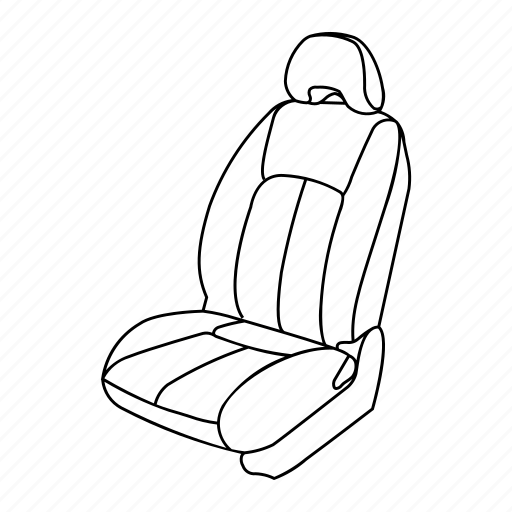
I fortunately arrived at the library the moment I crossed the bridge from Boston to Cambridge. This time I was taken to another room. A small, thin book was handed to me and, instead of opening it or reading the words, I closed my eyes and felt its content. I knew it was a book written by Alan Watts. Then I immediately woke up, disappointed that I had not checked to see if my intuition had been correct.
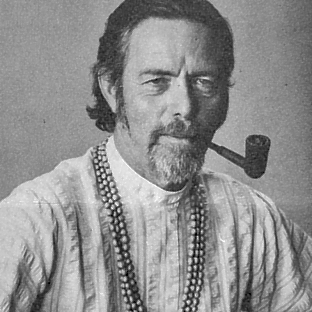
Lying there awake, I realized that surely the one page I first dreamed had been my way of sharing the most important spiritual experience of my life. When I was nineteen years old, I went into a university chapel in Missouri and had a full blown, initiatory mystical experience. Flooded with extraordinary sacred emotion—a great, fiery love that made my body tremble and shake— I was afterward bathed in a numinous light for over a month and the world of mystery has been accessible to me ever since.
Immediately after that experience I went to the university bookstore and a book about the life of Gopi Krishna and his kundalini awakening jumped off the shelf, a story I have written about several times. However, another book leapt into my hands that I have not mentioned to others before. It was the book, Cosmic Consciousness, by Richard Maurice Bucke. I still have the same copy that I purchased back then. Many years later, I would find that its account of C.M.C., the unknown woman from Montreal, would be the closest description to what I experienced in my youth.
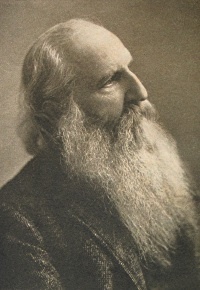
The description of what today we call “C.M.C. sacred ecstasy,” was most like what I found among the oldest ecstatics in the world—namely the Kalahari Bushmen’s reception of n/om and the body trembling brought on by the pinnacle emotion of extreme jubilation. As I lied awake pondering this history, I also remembered that after my own experience of cosmic consciousness I began to spontaneously improvise children’s fairy tales, beginning with stories about a butterfly named Timothy who was always changing.
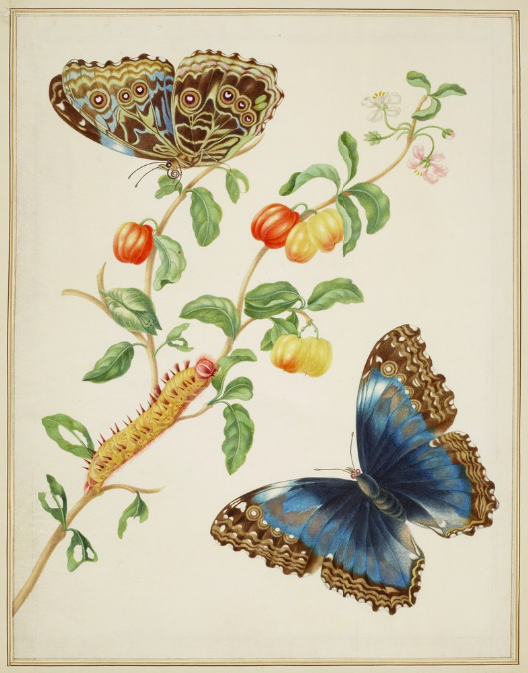
Following another bout of intense prayer cooking—hoping to be sent back to the spiritual classrooms to learn more about the mystery at hand— I fell asleep and dreamed again. In this vision, Hillary and I were sitting in the back row of an old Unitarian Church in Boston. I used to attend this house of worship as an undergraduate decades ago. Arlington Street Church was at that time a place of radical theology, social justice, protest against the Vietnam War, civil rights activity, and overnight shelter for homeless people. In the dream the minister was taking the podium to deliver his sermon. He said that today he’d make it a brief teaching. He then read from one page of a book written by Alan Watts. It was a thin book entitled, This Is It. The minister spoke as quotes from that book were projected on the wall behind him:
In this book, Watts discusses the “experience of cosmic consciousness . . . from all historical times and cultures we have reports of this same unmistakable sensation emerging, as a rule, quite suddenly and unexpectedly and from no clearly understood cause . . . The central core of the experience seems to be the conviction, or insight, that the immediate now, whatever its nature, is the goal and fulfillment of all living. Surrounding and flowing from this insight is an emotional ecstasy, a sense of intense relief, freedom, and lightness, and often of almost unbearable love for the world.”

Hillary and I looked at each other and smiled. We realized that the whole of Alan Watts’ wisdom sprang from his experience of sacred ecstasy, something he described as follows:
“Quite suddenly the weight of my own body disappeared. I felt that I owned nothing, not even a self, and that nothing owned me. The whole world became as transparent and unobstructed as my own mind; the “problem of life” simply ceased to exist, and for about eighteen hours I and everything around me felt like the wind blowing leaves across a field on an autumn day.“[2]
The full experience of what Watts called “now” is what we (after our recent visions) call the “middle” of every moment and situation. As Watts defined this kind of fully present, concentrated experience:
“There the line between myself and what happens to me is dissolved
and there is no stronghold for an ego even as a passive witness . . .
all happenings are mutually interdependent in a way that seems unbelievably harmonious.”[3]
In the dream, the Unitarian church did not host an intellectual discussion of what was meant by “cosmic consciousness,” as might be expected. Instead, they tried to sing a song about it and the surprise of that movement from explanatory words to evocative music woke me up.

I prayed and fell asleep again to continue the dreaming. This time I landed directly in the mystical library on high. Hillary and I were carrying a rare book inside a large box. A librarian, a young Japanese man, came up and said, “Stop, let me check that book.” He took the book out of its box and we noticed that the binding had been removed. There were only loose pages in it and some pages were missing. I then recalled that I had pulled out the most important pages. Before he could accuse me of any wrongdoing, I authoritatively announced, “We own this book and we have removed the pages that are the most important.”
In fact, we do own this book (both literally and emotionally). It is a rare collection of ancient Bushman rock art. The young man was startled but noticed that there was no library stamp or call number on the book so he could not argue that it was not ours. I considered how odd it was to be bringing a rare book to the library rather than looking for one.
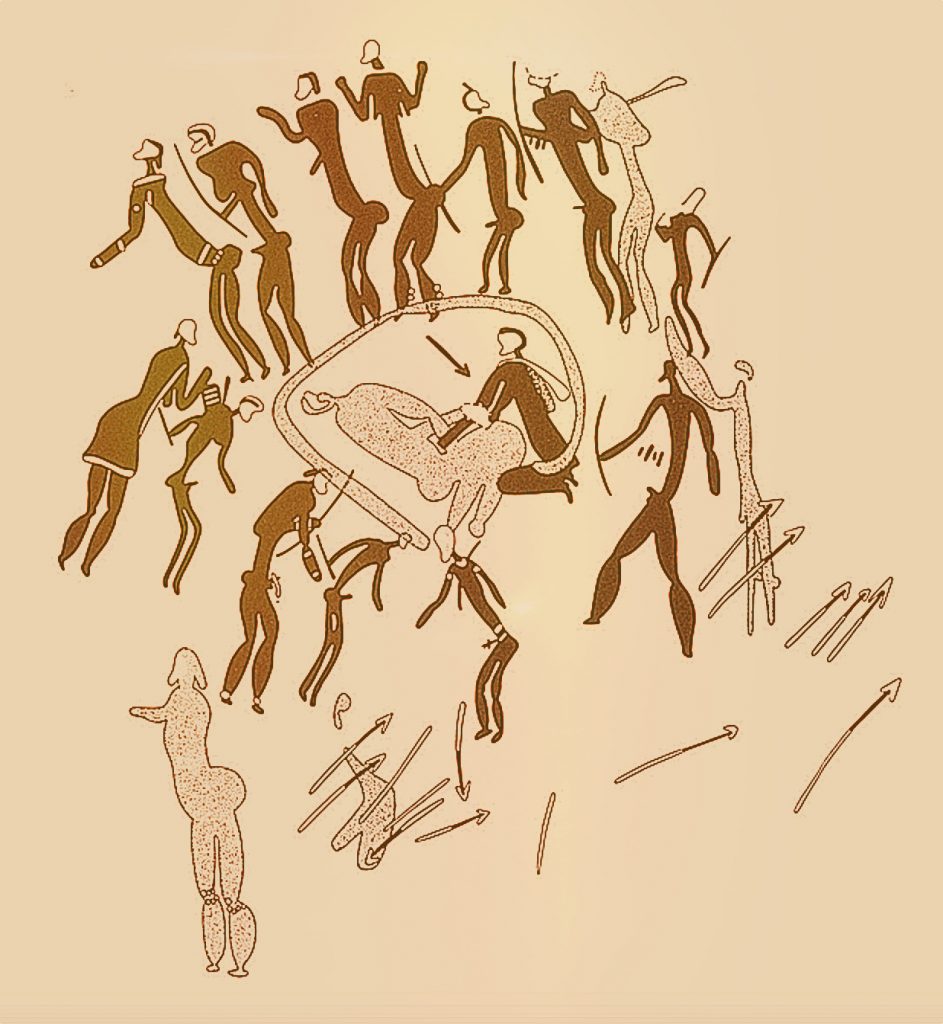
In that moment, Hillary and I realized that our mission was to create the books that are missing in the mystical library. Cybernetically speaking, visionary journeys must include not only receiving from but adding to the eternal Akashic records, enabling ancient wisdom to recursively come back in new forms. We also knew in the dream, without having to say it aloud to one another, that every time truth is encountered its form, name, description, and text may change.
Suddenly we felt we were amidst the big room of cosmic consciousness as we realized how my earliest experience of sacred ecstasy reverberated with Gopi Krishna’s kundalini awakening, Richard M. Bucke’s account of C.M.C.’s sacred ecstasy, and Alan Watts’ experience of “it,” the source from which all spiritual wisdom and emotional ecstasy flows. Sacred ecstatic awakening is also the deepest realization of cybernetics—the circularly organized, mutually dependent nature of all things. (It is no coincidence that both prior to and after my first spiritual experience I was led to study cybernetics). In the dream Hillary and I laughed as we said to one another at the same time, “Here again we find the declaration of dependence!” We were referring to the title of a gospel song by The Mississippi Mass Choir we had recently discovered a few weeks prior when traveling through Mississippi.
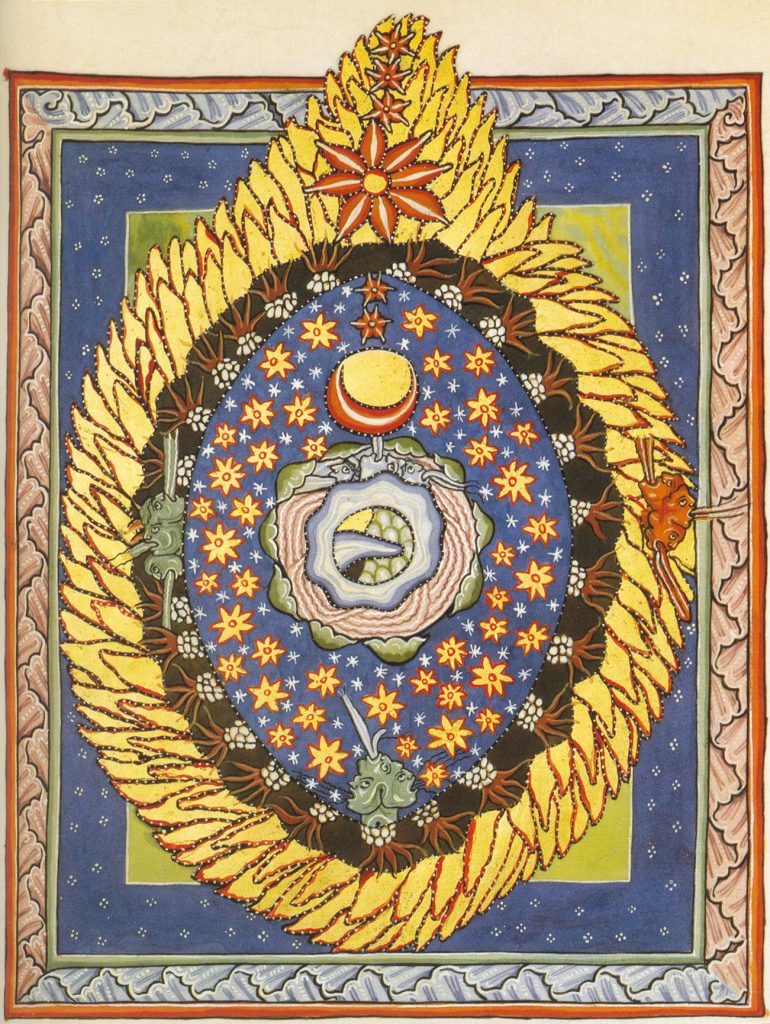
I fell asleep again filled with gratitude for all the teachings I had received. Soon I had a final dream. Hillary and I were attending a celebration of the night’s spiritual journeying. We heard the pop of champagne, the familiar sound associated with victory. Then a waiter dressed in a tuxedo served us a glass of wine from a silver serving tray. Before I could say, “that’s not champagne,” I realized we were in First Creation and that this champagne, like the water before it, had been turned into wine. I woke up laughing at the sweet madness of it all.
-The Keeneys, December 29, 2019
[1] Brad has published the story of his first experience of sacred ecstasy, most recently in our books Sacred Ecstatics: The Recipe for Setting Your Soul on Fire and Climbing the Rope to God: Mystical Testimony and Teaching (Volume 1).
[2] Alan Watts. 1989. The Book on the Taboo Against Knowing Who You Are. New York: Vintage Books, p. 124. Originally published in 1966.
[3] Alan Watts. 1973. This is It: And Other Essays on Zen and Spiritual Experience. New York: Vintage Books, p. 29. Originally published in 1958.
